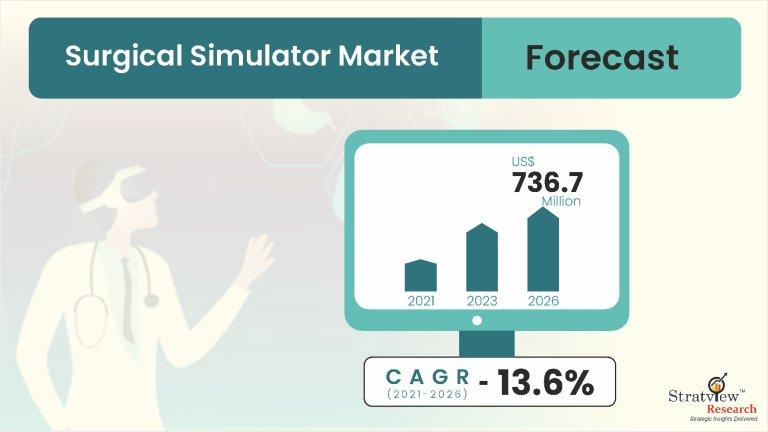The Market Response: Where Simulators Become Scalpels

When the surgical lights turn on and a patient lies anesthetized on the table, there is no room for uncertainty. That’s why hospitals and medical institutions are no longer waiting for new surgeons to “learn by doing”—they’re demanding readiness from day one. And the market is responding in kind, reshaping surgical simulation from an academic tool into a frontline surgical asset.
To get free sample, Click Here: https://www.stratviewresearch.com/Request-Sample/2290/surgical-simulator-market.html#form
According to Stratview Research, the surgical simulator market was estimated at USD 332.7 million in 2021 and is likely to grow at a CAGR of 13.6% during 2021-2026 to reach USD 736.7 million in 2026. But this is more than just a market expansion—it’s a signal that simulators are no longer an educational accessory. They’re becoming central to how surgical competence is built, validated, and scaled.
From Repetition to Realism
Earlier simulators resembled flight schools—mechanical, procedural, and linear. Today’s simulators are different. They mimic reality with unnerving accuracy—introducing unexpected bleeds, organ swelling, and variable patient responses. They allow the surgeon not just to learn, but to be surprised, adapt, and repeat.
Simulators now offer:
-
Haptic feedback for lifelike tissue resistance
-
AI-driven complexity that adapts based on the trainee’s actions
-
VR and AR interfaces that blend real and virtual anatomy in real time
-
Modular expansion for specialties like urology, neurosurgery, orthopedics, and OB-GYN
These aren’t just machines—they’re evolving mentors.
Mobility and Minimally Invasive Surgery Drive Demand
The global boom in laparoscopic and robotic surgery has ignited demand for simulators that can train for these precise, high-risk procedures.
-
A laparoscopic appendectomy that once required open surgery is now done through a 1.5 cm incision—but only if the surgeon has practiced the angles, tensions, and tool-handling beforehand.
-
Robotic platforms like Intuitive’s da Vinci or Medtronic’s Hugo now ship with dedicated simulators or integrate third-party modules from partners like Simbionix or Surgical Science.
For hospitals investing millions in robotic systems, simulators are not optional—they’re part of the ROI strategy.
Standardized Skill Verification is Fueling Adoption
What was once a luxury is becoming a licensing requirement.
-
In the U.S., residency programs increasingly integrate simulators as part of ACGME-mandated milestones.
-
In Europe, some countries have introduced simulation hours as part of official certification pathways.
-
Military and trauma centers now use simulation as a live-fire rehearsal platform for mass casualty or field surgery scenarios.
As simulation becomes a requirement, demand shifts from niche to necessity.
Hospitals See Value Beyond Training
For hospitals, simulators aren’t just about training—they’re about quality assurance.
-
Fewer intraoperative errors
-
Shorter learning curves for new hires
-
Reduced malpractice risk
-
Enhanced patient satisfaction scores
In a value-based care model, the simulator is a silent contributor to safer outcomes and better margins.
In short, the market no longer sees surgical simulators as a proxy for practice. It sees them as the first scalpel—the one that prepares the hand before the real one ever touches skin.
- Information Technology
- Office Equipment and Supplies
- Cars and Trucks
- Persons
- Books and Authors
- Tutorials
- Art
- Causes
- Crafts
- Dance
- Drinks
- Film
- Fitness
- Food
- Giochi
- Gardening
- Health
- Home
- Literature
- Music
- Networking
- Altre informazioni
- Party
- Religion
- Shopping
- Sports
- Theater
- Wellness



